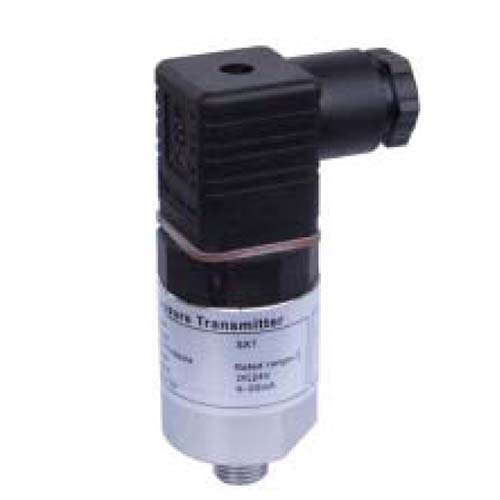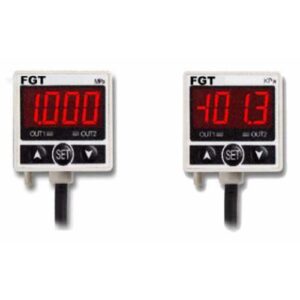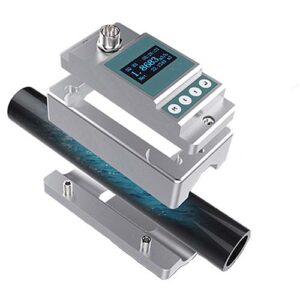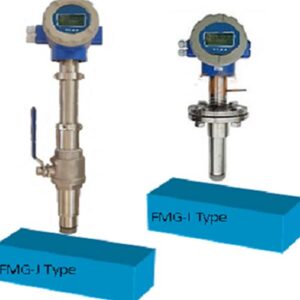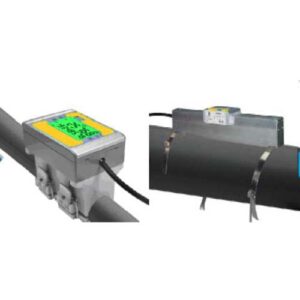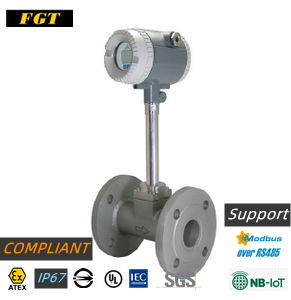FGT think your best choice in the future
System Integration Designers in FGT
- SUS316 This diaphragm type can be used in gas and liquid
- Output: 4~20mA or 1~5Vdc (Accuracy 0.25%)
- 2-wire (4~20mA) or 3-wire (1~5VDC)
- pressure transmitter
pressure transmitter[edit]
pressure transmitteris used to measureliquidandgasofpressureofteleporter. Similar to other sensors, the pressure transmitter converts the pressure into an electrical signal output when it works.
Pressure transmitters are used extensively in many monitoring and control applications. In addition to direct pressure measurement, pressure transmitters can also be used to indirectly measure other quantities, such as liquid/gas flow, velocity, water level orAltitude.
Pressure transmitters vary greatly in technology, design, performance, working conditions and prices. It is roughly estimated that there are more than 60 kinds of pressure sensors and at least 300 enterprises producing pressure transmitters in the world.
At the same time, there is also a class of pressure transmitters designed to dynamically measure high-speed changing pressures. Example applications are the combustion pressure of an engine cylinder orTurbine enginePressure monitoring of gases in Such transmitters are generallyPiezoelectric materialmanufacture, for examplequartz.
Some pressure transmitters, such as those used in traffic enforcement cameras, operate in binary mode, that is, when the pressure reaches a certain value, the transmitter controls to turn on or off the circuit. This type of pressure transmitter is also called doPressure Switch.
Type of pressure measurement[edit]
Pressure transmitters can be classified by the pressure range they can measure, the operating temperature, and the type of pressure; the most important of which is the type of pressure. If classified according to the type of pressure, pressure sensors can be divided into the following five categories:
- Absolute pressure transmitter:
- This pressure transmitter measures the true pressure of the fluid, which is relative tovacuumpressure under pressure. The absolute atmospheric pressure at sea level is 101.325kPa (14.7 PSI).
- Gauge pressure sensor:
- This pressure transmitter can measure the pressure relative to atmospheric pressure at a specific location,tire pressure gaugeAs an example, when the tire pressure gauge shows a reading of 0PSI, it means that the pressure inside the tire is equal to the atmospheric pressure, which is 14.7PSI.
- Vacuum pressure transmitter:
- This pressure transmitter is used to measure pressures less than one atmosphere. Some vacuum pressure sensors in the industry read relative to one atmosphere (negative readings), while others are based on absolute pressure.
- Differential Pressure Gauge:
- This instrument is used to measure the pressure difference between two pressures, such as measuringoil filterThe pressure difference between the two ends, the differential pressure gauge is also used to measure the flow or measure the liquid level in the pressure vessel.
- Sealed pressure transmitter:
- This instrument is similar to a gauge pressure sensor, but it is specially calibrated to measure pressure relative to sea level.
Power Requirements[edit]
Constant current source and constant pressure source are two kinds of excitation commonly used by pressure transmitters. The two incentive methods are different and have different effects. Constant current source excitation is beneficial to the compensation of thermal sensitivity drift. Because the temperature coefficient of the bridge arm resistor is positive, and the sensitivity temperature coefficient is negative. The temperature coefficient of the output signal voltage under constant current excitation is the algebraic sum of the two. The constant voltage excitation cannot directly provide the effect of sensitivity temperature compensation. However, a thermistor or diode can be connected in series outside the bridge to compensate for thermal sensitivity drift when using a constant voltage source. With cross-current excitation, this sensitivity compensation method does not work. It can be seen that the excitation of the constant voltage source and the constant current source cannot be interchanged at will.
In addition, the excitation power supply of the pressure sensor can be divided into proportional excitation and fixed excitation. The former is to connect the pressure sensor bridge directly to the power supply. When the power supply changes, the sensitivity and zero point of the pressure sensor change accordingly. The latter has a reference voltage inside, and the pressure sensor bridge is powered and excited by the reference voltage. The reference voltage is constant regardless of the power supply. As long as the supply voltage varies within a specified voltage range, the reference voltage does not change. Therefore, the output of the sensor remains unchanged and is not affected by the power supply voltage.
pressure detection technology[edit]
| This chapter requiresexpansion. (July 26, 2010) |
Application[edit]
Pressure transmitters have the following applications:
- pressure measurement
- Altitude awareness
- Flow measurement
- Level/depth measurement
- leak detection
Technical Specifications
Application field
Pressure sensors: 3 industrial applications enabling the smart factory
Real-time sensor data is enabling factories to better understand their own processes and keep them running. And putting that data into the IIoT also helps optimise how raw materials are ordered, handled and consumed. Knowing what to reorder and when can keep continuous processes at high capacity.
Smart manufacturing is changing the way we make, package and distribute just about everything, but Industry 4.0 is revolutionising the way our factories operate. While the Industrial IoT is dependent on connectivity, fundamentally it's harnessing raw data and turning that into operational intelligence, which means sensors are key to the entire process. While there are many types of sensors at play here, the pressure sensor is probably the most diverse and widely deployed type of sensor in the IIoT.
1. Monitoring process flows
Differential pressure sensors are used extensively in process flows where a fluid needs to pass through some form of barrier, such as a filter. Under normal conditions the pressure difference between the upstream (often called the line or influent pressure) and the downstream (effluent) pressure should be nil or minimal. As the filter becomes blocked with contaminants, the downstream pressure will decrease, which causes the difference measured to increase.
The sensor's output can be calibrated to show the maximum permissible pressure difference at full scale. For example, a 4-20mA output could be calibrated to show 20mA when the pressure difference reaches the maximum permissible, but read 4mA when the pressure difference is nil.
2. Measuring safe levels in liquid tanks
Submersible pressure sensors that are certified for use in intrinsically safe areas can be used to measure liquid pressures of up to 30 PSI with either a voltage or current (4-20mA) output. Positioning a submersible pressure sensor at the bottom of a tank would provide an accurate reading of the contents of the tank, thereby alerting workers or the process control system when the level in the tank falls below an allowable lower limit.
The pressure at the bottom of a tank – normally called the hydrostatic or head pressure – is measured in units of distance (feet, inches, meters) of water columns. For example, 27.670 inches of water column (WC) is around the same as 1 PSI at 100°F.
The pressure measured is only dependent on the height of the tank (as opposed to its shape) or the volume of the liquid. For this reason it is important that the sensor is placed at the bottom of the tank (instead of half way down) .
Process controllers can calculate the level of liquid in a tank by measuring the hydrostatic pressure, which is more accurately measured when the density of the liquid is also known.
3.Managing control loops
As well as being used to monitor processes, pressure sensors are often instrumental in the control loop. This is particularly relevant in the use of hydraulics, where pressurised fluids are used to apply effort in presses or lifts for example.
The sensors are often small, particularly those based on MEMS technology. They can measure less than 2mm on each side yet be capable of measuring absolute pressures in the region of 20 Bar or more. This makes them suitable in a range of applications, including medical and automotive.
Even smarter sensors
Smart factories are now employing smarter sensors, such as pressure sensors with built-in Bluetooth connectivity, allowing them to be monitored wirelessly. These sub-systems feature a gauge pressure sensor, Analog to Digital Converter and Bluetooth radio in a single sealed unit that can be mounted in places where adding wires may be difficult. As they are battery-powered they can operate autonomously for as much as two years without any maintenance, providing accurate pressure sensor readings for gases, liquids and even mildly corrosive fluids.
Pressure sensors are fundamental in the smart factory and in enabling Industry 4.0.

